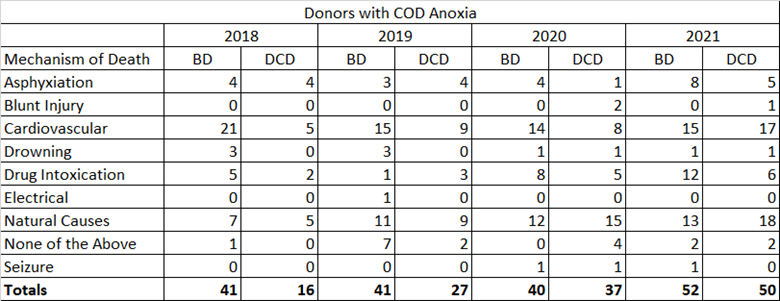
Examining one procurement organization's growth: riding coattails or innovating?
Clint Hostetler1, Jeffrey P. Orlowski1, Rachael E. Ketcham1, Ron A. Squires1.
1Operations, LifeShare Transplant Donor Services of Oklahoma, Oklahoma City, OK, United States
The need for organ donation remains great in the U.S. Despite continued and sustained growth in donation and transplantation numbers nationally, over 106,000 people remain on the waitlist as of this publication (Organ Procurement and Transplant Network Data, 2022). Some have hypothesized that the recent growth in organ donation is a direct result of organ procurement organizations (OPO) “riding the coattails of a national tragedy” (D Goldberg, R Lynch), suggesting that in some areas, OPO growth is correlated with the rise in opioid overdose deaths. It is a fact that all too often overdoses result in cardiac arrests and subsequent anoxic brain injury that leads to brain death (BD) or the family making the difficult decision to withdraw life sustaining therapy. When this happens, donation does become an option that is presented to the family.
One OPO took a deep dive into their data to understand what was driving their own OPO’s growth and to examine if this suggested trend existed in their donation service area. A 4-year retrospective data review was completed, and donors were categorized by donor type (BD vs DCD), age, and cause of death. Any donor whose cause of death (n=304) was listed as anoxia was examined closely and classified by the cause of the anoxic injury. Nine primary causes for anoxic brain injury emerged in the data.

This OPO saw a 24% growth in organ donors from 2018 to 2021. This growth was realized by growing their DCD donor population by 96%, from 57 donors in 2018 to 112 donors in 2021. Of the 112 DCD donors in 2021, 5.4%% (6) donors had life sustaining therapy withdrawn because of a devastating anoxic injury that was secondary to an overdose. Of the 304 combined BD and DCD donors with anoxic injury as their cause of death during the four-year study period, 13.8% of the anoxic injuries were the result of drug intoxications. Looking at all 832 donors for the same period, overdose represented just 5% of the total donor population from this OPO.

This OPO made DCD donation a strategic priority and has invested heavily in staffing, technology, and resources to increase the number of donors and lifesaving organs made available. As a result, this OPO has had record growth and has been a national leader in DCD donation. Interestingly, a query of the CDC WONDER database for inpatient overdose deaths suggest that numbers are stagnant in this OPO’s services area (Centers for Disease Control and Prevention). The growth experienced by this OPO is a result of hard work at all levels of the donation process to maximize every opportunity for donation, not riding the coattails of a national drug overdose epidemic.

right-click to download
